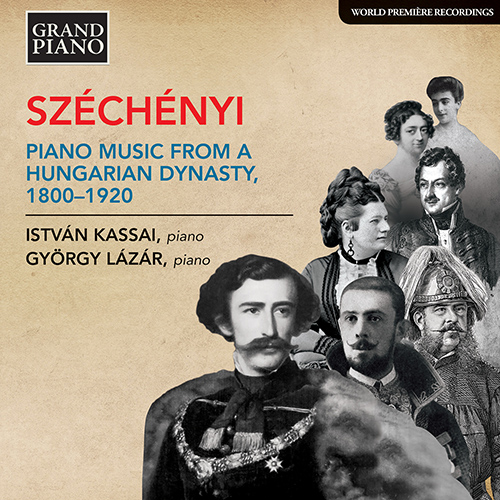
Imre Széchényi (1825 - 1898)
Count Imre Szechenyi of Sarvar-Felsovidek was born in Vienna in 1825. His father, Lajos Szechenyi, was chief court chamberlain for the Archduchess Sophie, mother of the future Emperor Franz Joseph I of Austria. Because of his father’s position, Imre grew up with Franz Joseph and his brother, later Maximilian I of Mexico. He was educated by private tutors, spoke five languages, played the piano and composed music.
At the age of 20 Szechenyi entered the diplomatic service, stationed first in Rome. In 1848 he was in Stockholm, and from 1850 to 1851 in Frankfurt, where he became friends with the future chancellor Otto von Bismarck. In 1852 he was in Brussels and Paris, and from mid-1854 in St Petersburg, where he formed a lifelong friendship with Johann Strauss II. In 1860 he became ambassador to Naples, and in 1878 Austro-Hungarian ambassador to Berlin.
Szechenyi represented Austria-Hungary in Berlin during precarious times. He acted in the name of the Emperor Franz Joseph, signing the Dreikaiservertrag (‘League of the Three Emperors’—a treaty between Austria-Hungary, Russia and Germany) in 1881; the Berlin treaty or Congo Conference regarding colonisation in Africa in 1885; and the monarchy’s recognition of the Mediterranean Agreements in 1887. For his service Emperor Franz Joseph awarded him the Golden Fleece, and Emperor Wilhelm II conferred on him the highest Prussian order, the Black Eagle.
Szechenyi’s musical career ran parallel to his diplomatic service. As early as 1845, his Lullaby, with a Hungarian text, and an Italian song, Il ritrovo in mare (‘Meeting at Sea’) appeared in print. In the 1850s he published 34 dances (polkas, mazurkas, galops, czardas and waltzes) as well as marches, for fortepiano, and scored the 18 polkas and mazurkas for large orchestra recorded here.
Szechenyi’s dances were popular and in demand. A resort ensemble in Bad Kreuznach, where Imre’s brother Denes spent seven weeks in 1856, played Imre’s polkas and serenaded Denes, thinking he was the composer. The conductor was disappointed when he found out his mistake.
Szechenyi’s friend Johann Strauss II, with whom he had spent his carefree bachelor years, generously placed Szechenyi’s works on his concert programmes, and dedicated two of his own compositions to him—Op. 215, Gedankenflug-Waltz (‘Flying Thoughts Waltz’) and Op. 182, Széchényi March. Strauss later recalled that Szechenyi had helped him flee Russia after his last St Petersburg love affair. The two friends met for the last time in May of 1886 in Berlin, where Szechenyi had arranged a concert of his own works.
In the spring of 1864 in Rome, Szechenyi met Franz Liszt and formed an immediate friendship with him. In 1872 and 1874 Liszt was a guest at the Szechenyi estate in Horpacs (Hungary). Liszt adapted a Szechenyi work, Introduction and Hungarian March, dedicated it to him and premiered it in 1873.
The Viennese court took note of the fact that Szechenyi was an outstanding pianist. When the Austrian Queen Elisabeth visited Budapest on 3 April 1869, she invited Szechenyi to dinner and afterwards enjoyed his virtuoso piano performance. Szechenyi often arranged concerts of his own compositions for invited guests.
Szechenyi’s publishers were Musee Musical in St Petersburg, Schott in Mainz, Kugler in Pest, Mechetti and Lewy in Vienna, Carl Paez in Berlin, and Breitkopf & Hartel in Leipzig. Many of his works were not published, and exist only as autographs (handwritten documents) or copies. A whole group of compositions are still unaccounted for. Szechenyi died in Budapest in 1898.


 Grand Piano has gained a reputation for producing high quality recordings of rare keyboard gems. Dedicated to the exploration of undiscovered piano repertoire, the label specialises in complete cycles of piano works by many lesser-known composers, whose output might otherwise have remained unknown and unrecorded.
Grand Piano has gained a reputation for producing high quality recordings of rare keyboard gems. Dedicated to the exploration of undiscovered piano repertoire, the label specialises in complete cycles of piano works by many lesser-known composers, whose output might otherwise have remained unknown and unrecorded.






